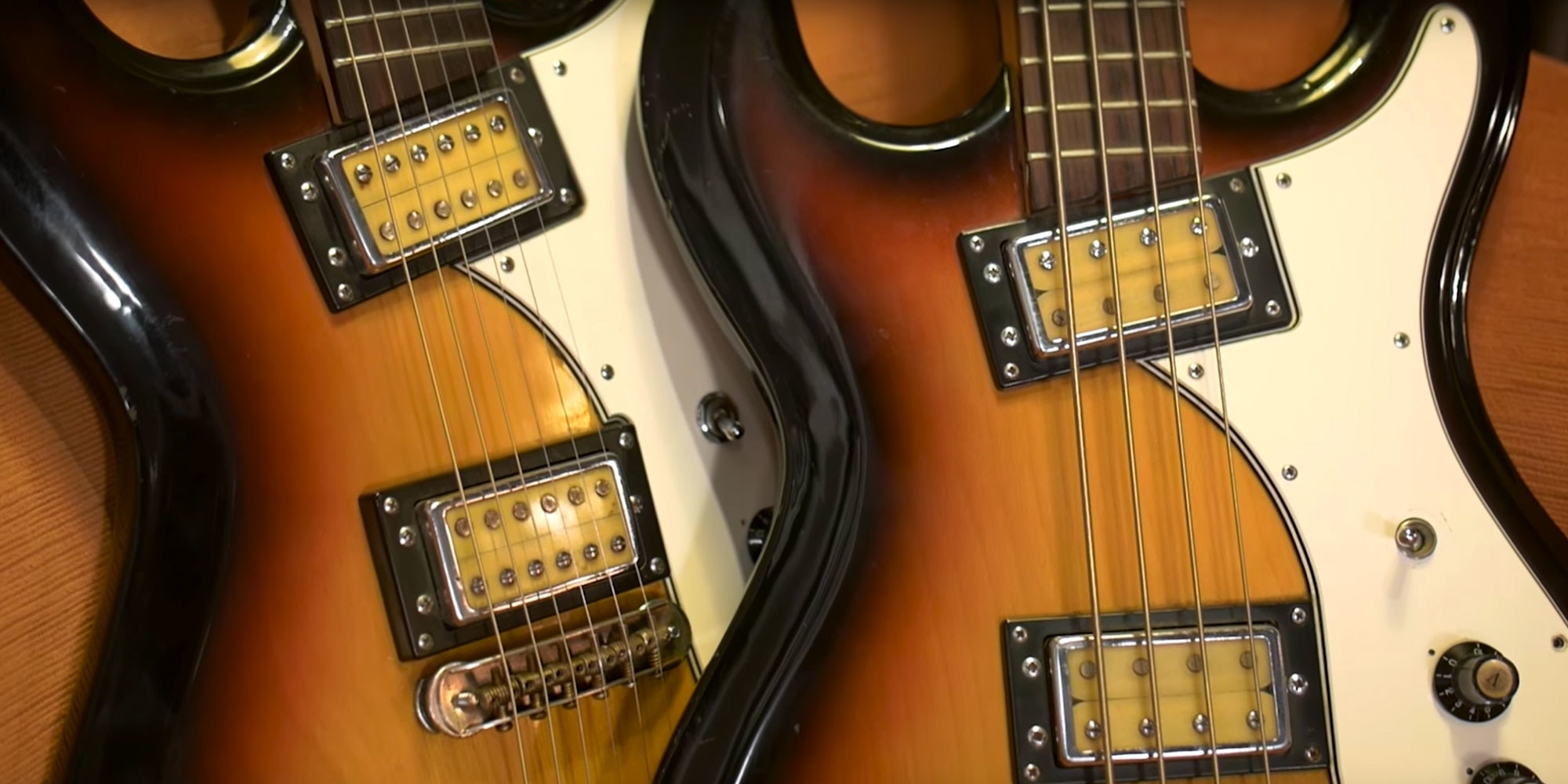
There’s a certain mystique surrounding those funky Univox Hi-Fliers. Part of it is due to the iconic guitar it was created to mimic. Some of it is due to the fact that famous guitarists, like Kurt Cobain, have slung them across their shoulders.
Another part entirely has to do with the lack of knowledge vintage collectors have regarding the manufacturing of the guitars themselves. No one really knows for sure when or even exactly where the Hi-Fliers started being made. We can make highly educated guesses, but this lack of certainty is appealing to players and collectors alike.
According to Michael Wright of Vintage Guitar magazine, Univox itself has a rather convoluted history. Though it was a part of the “lawsuit era” of the ‘70s, Univox wasn’t just another copy manufacturer out of Japan. It’s a bit more complicated than that. The firm was created from a joining of multiple companies that had a few other name brand guitars – Hagstrom, for one – under their corporate umbrellas.
Unicord Acquires Amplifier Corp. of America and Becomes Univox
Unicord, a gear distributor in the early ‘60s working out of New York, was the first iteration of Univox. When it acquired the Amplifier Corporation of America, or ACA, sometime in the early-to-mid ‘60s, it began to market tube amps that carried the name “Univox.” However, there are no reference materials to be found – at least in the annals of the internet – that detail these earliest Univox amps.
Then, in the late ‘60s, two things happened. First, Unicord was purchased by conglomerate Gulf+Western around 1967. Then, Unicord was merged with a company called Merson, which housed brands like Tempo, Giannini and Hagstrom. It’s not certain what the exact timeline of these events were, but once the merger occurred, Univox up and moved its production from New York City to Westbury, NY. However, that didn’t stay static for long.
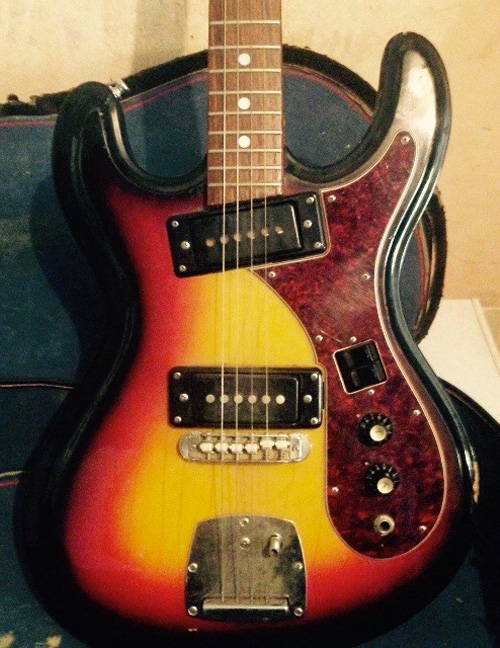
Univox Hi-Flier Phase One
By 1968, construction of the Univox amp’s chassis was moved to Japan, while cabinet production remained in Westbury; construction of Univox guitars, also in Japan, likely began around this time as well. Much like the exact construction methods and merger timelines, information regarding the nascent Univox guitars is scant.
The Hi-Flier likely is among the first of Univox's guitars. For those who don’t know, the Hi-Flier takes after the Mosrite Ventures. This guitar gained significant influence in Japan, particularly because of the Ventures’s enormous popularity in the country at that time. The Ventures were an instrumental group who rose to fame worldwide in the ‘60s, and, despite their decline in the U.S. in the ‘70s, remained “Beatlemania huge” in Japan up until today. Along with the Ventures-esque guitar, a Hi-Flier bass was designed as well, which was nearly identical to its six-stringed counterpart.
The Hi-Flier guitar, which was possibly built in the Matsumoku factory, underwent multiple phases during the course of its production. Each of the Hi-Flier’s four manufacturing phases came with a variety of feature changes, ranging from simply switching the color of the pickguard to actually fitting the guitar for humbuckers rather than the P90-style pickups it originally came with.
Phase One Hi-Fliers
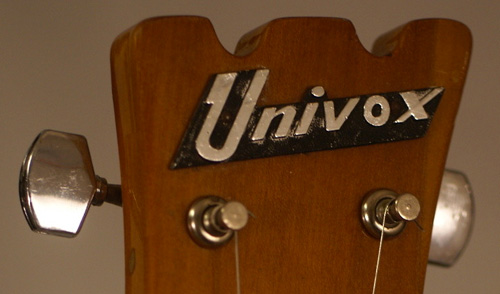
Univox Hi-Flier Phase One Headstock
Phase One Hi-Fliers, the first to be made, debuted in ’68. This first iteration sported two P90-style pickups and came in only one finish: a three-tone sunburst. A black finish came later on in this phase, and still more came after.
Pickguards were white pearloid, or sometimes tortoiseshell, the neck used a string tree, and the all-around makeup of the guitar was bigger than later iterations — thicker necks, bigger and heavier bodies, larger fret markers. One obvious differentiator is the logo on the headstock; the earlier models, and even a few released as they moved into Phase Two, had a raised plastic “Univox” logo on the headstock.
Phase Two Hi-Fliers
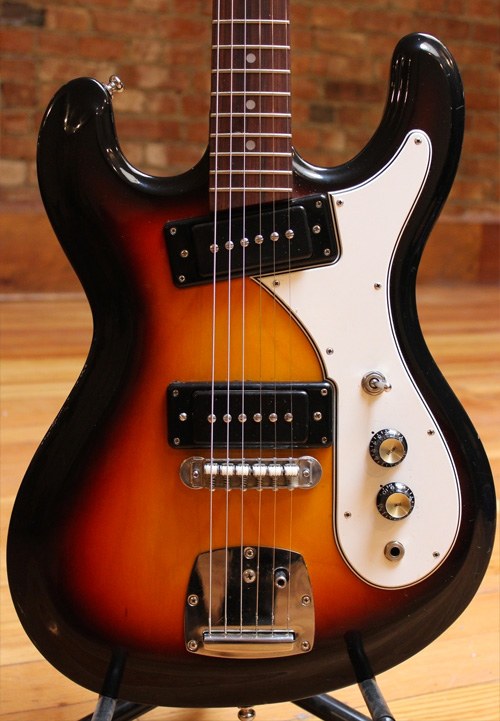
Univox Hi-Flier Phase Two
Although there’s no clear delineation for when Phase Two officially began, the Hi-Flier began to develop new features. While it maintained the P90-style pickups, other aspects of the guitar were changed. The fret markers shrunk and were made uniform in size, the rocker switches were replaced by three-way toggles and a plain white pickguard was made standard.
At some point during the production of Phase Two Hi-Fliers, the plastic raised Univox logo on the headstock was replaced with a block-style decal. This remained until the guitar went out of production in the late ‘70s.
Phase Three Hi-Fliers
Phase Three began in 1974, bringing some of the biggest changes to the series with it. Univox swapped in its own humbuckers, made unique in part due to their visible white bobbins. This change took the Phase Three Hi-Flier solidly out of the realm of Mosrite Ventures copy territory and into its own realm, considering the tone and high output changed the sound so significantly. The presence of these humbuckers – found on other Univox guitars of the same era – make the Phase Three versions some of the most highly sought after Hi-Fliers.
Along with the addition of humbuckers, the natural-finish guitars and many of the later Phase Three models in black sport all-maple necks and fingerboards.
Phase Four Hi-Fliers
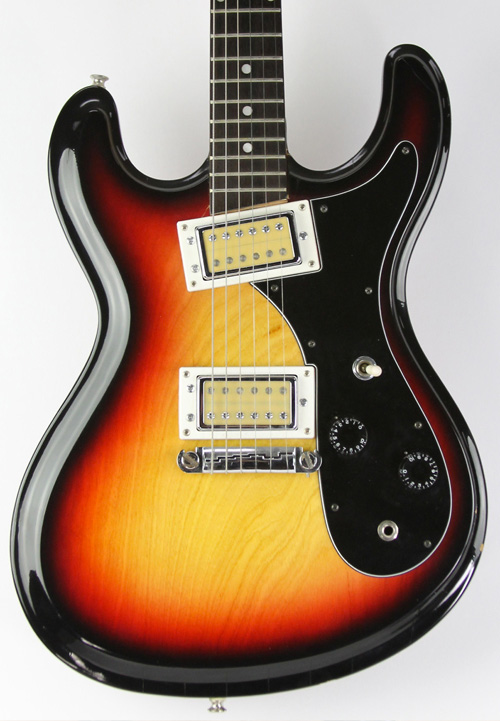
Univox Hi-Flier Phase Four
About three years later came Phase Four, at what seems to be the end of the Hi-Flier’s life. There were a few huge changes that came with this phase, most prominently the switch from the Jazzmaster-style vibrato to a Gibson-style bridge and tailpiece.
Black pickguards for natural and sunburst-finish models also became the standard. The layout of the volume and tone knobs was changed from the in-line configuration to a horizontal one, too.
Though not much is known about the production of the Hi-Flier after about 1977, it clearly came to an end — and clearly has had an impact on players in the vintage market. Used by guitarists like Cobain and Lee Ranaldo of Sonic Youth, as well as many others in a variety of bands, the Hi-Flier gained notoriety as a unique guitar with a sound as striking as its looks.
Univox only lasted a few years after the end of the Hi-Flier. While Unichord and Merson split up in 1975, it was the purchase of what remained of Univox by Korg in 1985 that truly did the brand in. The company’s end was solidified by the 1987 fire in the Matsumoku factory.
New Life
Though it’s a pretty sad end to what became a beloved brand and guitar, the Hi-Flier guitars and basses gained new life in the mid-‘90s, thanks to the aforementioned famous players. Today, they're again seeming to blossom in the vintage market. Only a few years ago, a Hi-Flier could be purchased on the cheap, but sales prices for these funky guitars have steadily been on the rise.
There are also companies like Eastwood Guitars that are releasing their own versions of the Hi-Flier. Available for a pretty low sum, you can get Eastwood’s recreation of a Phase 4 Hi-Flier in both right-handed and lefty configurations. If you don’t find the world of vintage guitars too appealing, but you dig the look and feel of the Hi-Flier, this might be a prime option for you.
Want to hear how a Phase X Hi-Flier guitar and bass actually sound? Check out our latest installment of Funky Vintage above, and if you want to get in on the Hi-Flier craze before the market goes up anymore, click the banners below to shop for your own.
Univox Guitars & Basses